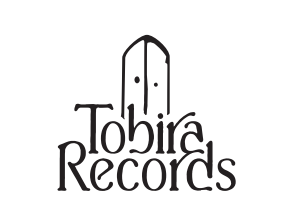クイックビュー
{"id":8984452759802,"title":"Karl Van Deun \/\/ almadies 10inch","handle":"karl-van-deun-almadies-10inch-cd","description":"\u003cp\u003eセネガルのギタリストKarl Van Deunが、2019年にベルギーのジャズレーベルAspen Editiesからリリースした10\"です。\u003c\/p\u003e\n\u003cp\u003eアコースティックギターによるインプロ14曲を収録。DLコード付属。(CDは付属しません)\u003c\/p\u003e\n\u003cp\u003eアンビエントリスナーにもオススメです。\u003c\/p\u003e\n\u003cp\u003e以下、レーベルによる解説です。\u003c\/p\u003e\n\u003cp\u003e\u003cem\u003e\"1995年のある夜。ダカールの静かな家で、一人のギタリストがもう一人の手にアコースティックギターを押し渡した。それはブリュッセルの楽器店でわずかな金で購入した、特殊なナイロン弦を張った東欧製の小さな楽器だった。ピエール・ヴァン・ドルマールはセネガルへ旅立つ前に、ダカール音楽院の生徒たちのために何本か買い込んでいた。もう一人の音楽家:Karl Van Deun。彼は休暇を西アフリカで、同志であり師であるピエールと共に過ごしていた。\u003c\/em\u003e\u003c\/p\u003e\n\u003cp\u003e\u003cem\u003e蒸し暑いアフリカの夜の一つで、ピエールは音楽を奏でようと提案した。その小さなギターだけを手にしたKarl Van Deunは、準備もなく直感的に思いつくままに演奏した。ピエールはそのセッションをカセットテープに録音し、後にその音楽をミックスすることになる。\u003c\/em\u003e\u003c\/p\u003e\n\u003cp\u003e\u003cem\u003e健康上の問題から、Karl Van Deunは1993年以降ほとんどギターを弾いていなかった。あの夜、彼は十数曲の短い即興演奏を披露した。後になって初めて、彼が何年も前に取り組んでいたクラシックの装飾技法の研究が、自身の発想と演奏に浸透していたことに気づいたのだ。\"\u003c\/em\u003e\u003c\/p\u003e\n\u003cp\u003e\u003ciframe src=\"https:\/\/bandcamp.com\/EmbeddedPlayer\/album=1438525400\/size=large\/bgcol=ffffff\/linkcol=0687f5\/tracklist=false\/artwork=none\/transparent=true\/\" style=\"border: 0; width: 100%; height: 120px;\"\u003e\u003c\/iframe\u003e\u003c\/p\u003e\n\u003cp\u003e---------------------------------------------------\u003c\/p\u003e\n\u003cp\u003e10\" black vinyl.\u003c\/p\u003e\n\u003cp\u003e\u003cstrong\u003eTracklist\u003c\/strong\u003e:\u003c\/p\u003e\n\u003cp class=\"MsoNormal\"\u003eA1. Eleven\u003cbr\u003e\u003cspan style=\"font-family: -apple-system, BlinkMacSystemFont, 'San Francisco', 'Segoe UI', Roboto, 'Helvetica Neue', sans-serif; font-size: 0.875rem;\"\u003eA2. Four\u003cbr\u003e\u003c\/span\u003e\u003cspan style=\"font-family: -apple-system, BlinkMacSystemFont, 'San Francisco', 'Segoe UI', Roboto, 'Helvetica Neue', sans-serif; font-size: 0.875rem;\"\u003eA3. Five\u003cbr\u003e\u003c\/span\u003eB1. Eight\u003cbr\u003e\u003cspan style=\"font-family: -apple-system, BlinkMacSystemFont, 'San Francisco', 'Segoe UI', Roboto, 'Helvetica Neue', sans-serif; font-size: 0.875rem;\"\u003eB2. Seven\u003cbr\u003e\u003c\/span\u003eB3. Six\u003cbr\u003e\u003cspan style=\"font-family: -apple-system, BlinkMacSystemFont, 'San Francisco', 'Segoe UI', Roboto, 'Helvetica Neue', sans-serif; font-size: 0.875rem;\"\u003eB4. Thirteen\u003cbr\u003e\u003c\/span\u003eCD-1. Eleven\u003cbr\u003e\u003cspan style=\"font-family: -apple-system, BlinkMacSystemFont, 'San Francisco', 'Segoe UI', Roboto, 'Helvetica Neue', sans-serif; font-size: 0.875rem;\"\u003eCD-2. Four\u003cbr\u003e\u003c\/span\u003e\u003cspan style=\"font-family: -apple-system, BlinkMacSystemFont, 'San Francisco', 'Segoe UI', Roboto, 'Helvetica Neue', sans-serif; font-size: 0.875rem;\"\u003eCD-3. Five\u003cbr\u003e\u003c\/span\u003e\u003cspan style=\"font-family: -apple-system, BlinkMacSystemFont, 'San Francisco', 'Segoe UI', Roboto, 'Helvetica Neue', sans-serif; font-size: 0.875rem;\"\u003eCD-4. Eight\u003cbr\u003e\u003c\/span\u003e\u003cspan style=\"font-family: -apple-system, BlinkMacSystemFont, 'San Francisco', 'Segoe UI', Roboto, 'Helvetica Neue', sans-serif; font-size: 0.875rem;\"\u003eCD-5. Seven\u003cbr\u003e\u003c\/span\u003e\u003cspan style=\"font-family: -apple-system, BlinkMacSystemFont, 'San Francisco', 'Segoe UI', Roboto, 'Helvetica Neue', sans-serif; font-size: 0.875rem;\"\u003eCD-6. Six\u003cbr\u003e\u003c\/span\u003e\u003cspan style=\"font-family: -apple-system, BlinkMacSystemFont, 'San Francisco', 'Segoe UI', Roboto, 'Helvetica Neue', sans-serif; font-size: 0.875rem;\"\u003eCD-7. Thirteen\u003c\/span\u003e\u003c\/p\u003e\n\u003cp\u003eAspen Edities:\u003c\/p\u003e\n\u003cp\u003e\"\u003c\/p\u003e\n\u003cmeta charset=\"utf-8\"\u003e\n\u003cp\u003e\u003cem\u003eAn evening in 1995. In a quiet house in Dakar, one guitarist pushes an acoustic guitar in the hands of another. It was a small Eastern European instrument with special nylon strings, bought for little money in a Brussels music store. Pierre Van Dormael had purchased several before traveling to Senegal, for his students at the Conservatory of Dakar. The other musician: Karl Van Deun. He spent his vacation in West-Africa, with his comrade and teacher.\u003c\/em\u003e\u003cbr\u003e\u003cbr\u003e\u003cem\u003eDuring one of those clammy African nights Pierre suggested to make some music. With nothing more than that small guitar, Karl played what came to him, intuitively and without preparation. Pierre recorded the session on cassette and would go on to mix the music as well.\u003c\/em\u003e\u003cbr\u003e\u003cbr\u003e\u003cem\u003eDue to health problems, Karl had barely played guitar since 1993. That night he played about a dozen short improvisations. Only afterwards did he hear how his study of classical figuration, which he had been doing years before, had seeped through into his ideas and his playing.\"\u003c\/em\u003e\u003c\/p\u003e\n\u003cp\u003eArtist : Karl Van Deun\u003c\/p\u003e\n\u003cp\u003eLabel : Aspen Edities\u003c\/p\u003e\n\u003cp\u003ecat no :\u003c\/p\u003e\n\u003cmeta charset=\"utf-8\"\u003e\n\u003cp\u003e\u003cspan\u003eAspen 005\u003c\/span\u003e\u003c\/p\u003e","published_at":"2025-11-06T12:38:07+09:00","created_at":"2025-11-05T11:31:52+09:00","vendor":"Tobira Records","type":"","tags":["ambient","jazz","lp","new"],"price":389000,"price_min":389000,"price_max":389000,"available":true,"price_varies":false,"compare_at_price":null,"compare_at_price_min":0,"compare_at_price_max":0,"compare_at_price_varies":false,"variants":[{"id":47902666850554,"title":"Default Title","option1":"Default Title","option2":null,"option3":null,"sku":null,"requires_shipping":true,"taxable":true,"featured_image":null,"available":true,"name":"Karl Van Deun \/\/ almadies 10inch","public_title":null,"options":["Default Title"],"price":389000,"weight":530,"compare_at_price":null,"inventory_management":"shopify","barcode":"","requires_selling_plan":false,"selling_plan_allocations":[]}],"images":["\/\/tobirarecords.com\/cdn\/shop\/files\/alm1_33225c7d-7395-470e-a0ad-a1e17d7c11d3.jpg?v=1762309813","\/\/tobirarecords.com\/cdn\/shop\/files\/alm2_1f4250f3-0da4-4a27-9b39-d5b4f7ff4b5d.jpg?v=1762309813","\/\/tobirarecords.com\/cdn\/shop\/files\/alm3_3ed7bb85-9636-4726-a866-3afae1e8b84e.jpg?v=1762309813"],"featured_image":"\/\/tobirarecords.com\/cdn\/shop\/files\/alm1_33225c7d-7395-470e-a0ad-a1e17d7c11d3.jpg?v=1762309813","options":["Title"],"media":[{"alt":null,"id":37400504041722,"position":1,"preview_image":{"aspect_ratio":1.0,"height":700,"width":700,"src":"\/\/tobirarecords.com\/cdn\/shop\/files\/alm1_33225c7d-7395-470e-a0ad-a1e17d7c11d3.jpg?v=1762309813"},"aspect_ratio":1.0,"height":700,"media_type":"image","src":"\/\/tobirarecords.com\/cdn\/shop\/files\/alm1_33225c7d-7395-470e-a0ad-a1e17d7c11d3.jpg?v=1762309813","width":700},{"alt":null,"id":37400504074490,"position":2,"preview_image":{"aspect_ratio":1.003,"height":1196,"width":1200,"src":"\/\/tobirarecords.com\/cdn\/shop\/files\/alm2_1f4250f3-0da4-4a27-9b39-d5b4f7ff4b5d.jpg?v=1762309813"},"aspect_ratio":1.003,"height":1196,"media_type":"image","src":"\/\/tobirarecords.com\/cdn\/shop\/files\/alm2_1f4250f3-0da4-4a27-9b39-d5b4f7ff4b5d.jpg?v=1762309813","width":1200},{"alt":null,"id":37400504107258,"position":3,"preview_image":{"aspect_ratio":1.333,"height":900,"width":1200,"src":"\/\/tobirarecords.com\/cdn\/shop\/files\/alm3_3ed7bb85-9636-4726-a866-3afae1e8b84e.jpg?v=1762309813"},"aspect_ratio":1.333,"height":900,"media_type":"image","src":"\/\/tobirarecords.com\/cdn\/shop\/files\/alm3_3ed7bb85-9636-4726-a866-3afae1e8b84e.jpg?v=1762309813","width":1200}],"requires_selling_plan":false,"selling_plan_groups":[],"content":"\u003cp\u003eセネガルのギタリストKarl Van Deunが、2019年にベルギーのジャズレーベルAspen Editiesからリリースした10\"です。\u003c\/p\u003e\n\u003cp\u003eアコースティックギターによるインプロ14曲を収録。DLコード付属。(CDは付属しません)\u003c\/p\u003e\n\u003cp\u003eアンビエントリスナーにもオススメです。\u003c\/p\u003e\n\u003cp\u003e以下、レーベルによる解説です。\u003c\/p\u003e\n\u003cp\u003e\u003cem\u003e\"1995年のある夜。ダカールの静かな家で、一人のギタリストがもう一人の手にアコースティックギターを押し渡した。それはブリュッセルの楽器店でわずかな金で購入した、特殊なナイロン弦を張った東欧製の小さな楽器だった。ピエール・ヴァン・ドルマールはセネガルへ旅立つ前に、ダカール音楽院の生徒たちのために何本か買い込んでいた。もう一人の音楽家:Karl Van Deun。彼は休暇を西アフリカで、同志であり師であるピエールと共に過ごしていた。\u003c\/em\u003e\u003c\/p\u003e\n\u003cp\u003e\u003cem\u003e蒸し暑いアフリカの夜の一つで、ピエールは音楽を奏でようと提案した。その小さなギターだけを手にしたKarl Van Deunは、準備もなく直感的に思いつくままに演奏した。ピエールはそのセッションをカセットテープに録音し、後にその音楽をミックスすることになる。\u003c\/em\u003e\u003c\/p\u003e\n\u003cp\u003e\u003cem\u003e健康上の問題から、Karl Van Deunは1993年以降ほとんどギターを弾いていなかった。あの夜、彼は十数曲の短い即興演奏を披露した。後になって初めて、彼が何年も前に取り組んでいたクラシックの装飾技法の研究が、自身の発想と演奏に浸透していたことに気づいたのだ。\"\u003c\/em\u003e\u003c\/p\u003e\n\u003cp\u003e\u003ciframe src=\"https:\/\/bandcamp.com\/EmbeddedPlayer\/album=1438525400\/size=large\/bgcol=ffffff\/linkcol=0687f5\/tracklist=false\/artwork=none\/transparent=true\/\" style=\"border: 0; width: 100%; height: 120px;\"\u003e\u003c\/iframe\u003e\u003c\/p\u003e\n\u003cp\u003e---------------------------------------------------\u003c\/p\u003e\n\u003cp\u003e10\" black vinyl.\u003c\/p\u003e\n\u003cp\u003e\u003cstrong\u003eTracklist\u003c\/strong\u003e:\u003c\/p\u003e\n\u003cp class=\"MsoNormal\"\u003eA1. Eleven\u003cbr\u003e\u003cspan style=\"font-family: -apple-system, BlinkMacSystemFont, 'San Francisco', 'Segoe UI', Roboto, 'Helvetica Neue', sans-serif; font-size: 0.875rem;\"\u003eA2. Four\u003cbr\u003e\u003c\/span\u003e\u003cspan style=\"font-family: -apple-system, BlinkMacSystemFont, 'San Francisco', 'Segoe UI', Roboto, 'Helvetica Neue', sans-serif; font-size: 0.875rem;\"\u003eA3. Five\u003cbr\u003e\u003c\/span\u003eB1. Eight\u003cbr\u003e\u003cspan style=\"font-family: -apple-system, BlinkMacSystemFont, 'San Francisco', 'Segoe UI', Roboto, 'Helvetica Neue', sans-serif; font-size: 0.875rem;\"\u003eB2. Seven\u003cbr\u003e\u003c\/span\u003eB3. Six\u003cbr\u003e\u003cspan style=\"font-family: -apple-system, BlinkMacSystemFont, 'San Francisco', 'Segoe UI', Roboto, 'Helvetica Neue', sans-serif; font-size: 0.875rem;\"\u003eB4. Thirteen\u003cbr\u003e\u003c\/span\u003eCD-1. Eleven\u003cbr\u003e\u003cspan style=\"font-family: -apple-system, BlinkMacSystemFont, 'San Francisco', 'Segoe UI', Roboto, 'Helvetica Neue', sans-serif; font-size: 0.875rem;\"\u003eCD-2. Four\u003cbr\u003e\u003c\/span\u003e\u003cspan style=\"font-family: -apple-system, BlinkMacSystemFont, 'San Francisco', 'Segoe UI', Roboto, 'Helvetica Neue', sans-serif; font-size: 0.875rem;\"\u003eCD-3. Five\u003cbr\u003e\u003c\/span\u003e\u003cspan style=\"font-family: -apple-system, BlinkMacSystemFont, 'San Francisco', 'Segoe UI', Roboto, 'Helvetica Neue', sans-serif; font-size: 0.875rem;\"\u003eCD-4. Eight\u003cbr\u003e\u003c\/span\u003e\u003cspan style=\"font-family: -apple-system, BlinkMacSystemFont, 'San Francisco', 'Segoe UI', Roboto, 'Helvetica Neue', sans-serif; font-size: 0.875rem;\"\u003eCD-5. Seven\u003cbr\u003e\u003c\/span\u003e\u003cspan style=\"font-family: -apple-system, BlinkMacSystemFont, 'San Francisco', 'Segoe UI', Roboto, 'Helvetica Neue', sans-serif; font-size: 0.875rem;\"\u003eCD-6. Six\u003cbr\u003e\u003c\/span\u003e\u003cspan style=\"font-family: -apple-system, BlinkMacSystemFont, 'San Francisco', 'Segoe UI', Roboto, 'Helvetica Neue', sans-serif; font-size: 0.875rem;\"\u003eCD-7. Thirteen\u003c\/span\u003e\u003c\/p\u003e\n\u003cp\u003eAspen Edities:\u003c\/p\u003e\n\u003cp\u003e\"\u003c\/p\u003e\n\u003cmeta charset=\"utf-8\"\u003e\n\u003cp\u003e\u003cem\u003eAn evening in 1995. In a quiet house in Dakar, one guitarist pushes an acoustic guitar in the hands of another. It was a small Eastern European instrument with special nylon strings, bought for little money in a Brussels music store. Pierre Van Dormael had purchased several before traveling to Senegal, for his students at the Conservatory of Dakar. The other musician: Karl Van Deun. He spent his vacation in West-Africa, with his comrade and teacher.\u003c\/em\u003e\u003cbr\u003e\u003cbr\u003e\u003cem\u003eDuring one of those clammy African nights Pierre suggested to make some music. With nothing more than that small guitar, Karl played what came to him, intuitively and without preparation. Pierre recorded the session on cassette and would go on to mix the music as well.\u003c\/em\u003e\u003cbr\u003e\u003cbr\u003e\u003cem\u003eDue to health problems, Karl had barely played guitar since 1993. That night he played about a dozen short improvisations. Only afterwards did he hear how his study of classical figuration, which he had been doing years before, had seeped through into his ideas and his playing.\"\u003c\/em\u003e\u003c\/p\u003e\n\u003cp\u003eArtist : Karl Van Deun\u003c\/p\u003e\n\u003cp\u003eLabel : Aspen Edities\u003c\/p\u003e\n\u003cp\u003ecat no :\u003c\/p\u003e\n\u003cmeta charset=\"utf-8\"\u003e\n\u003cp\u003e\u003cspan\u003eAspen 005\u003c\/span\u003e\u003c\/p\u003e"}







